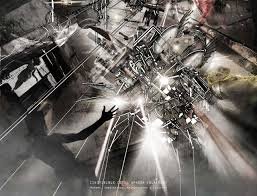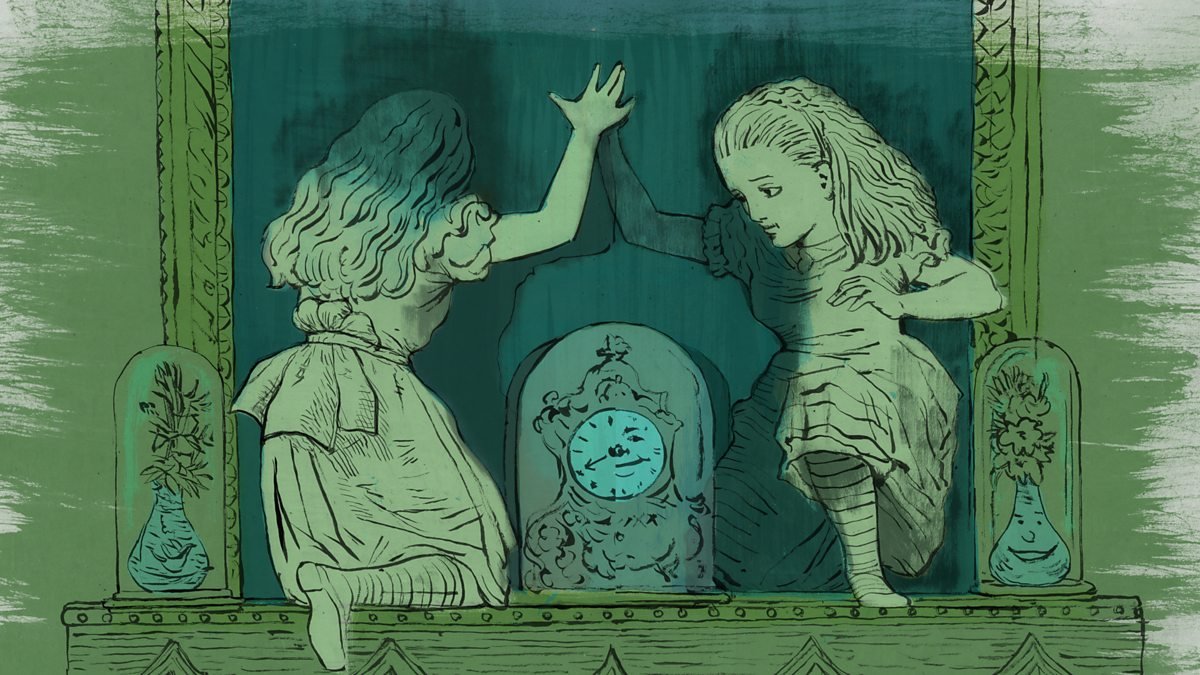When the self shatters, it does not vanish. It multiplies, disperses, and hides within the fractures of perception. Schizophrenia, at its deepest, is not the end of consciousness but its radical reorganization — the disassembly of the scaffolding that keeps experience coherent. The mind, deprived of its narrative spine, begins to perceive itself from every angle at once. It becomes both subject and object, observer and observed, god and fragment. This is not merely confusion; it is the eruption of infinity into a finite skull.
To live within such a mind is to inhabit too many worlds simultaneously. The walls between imagination and perception melt. The inner monologue becomes externalized; thought transforms into echo, echo into voice, voice into reality. There is no longer a border between the seen and the believed. What others call hallucination, the schizophrenic experiences as revelation — not illusion but intrusion, the world speaking in a language only they can hear. It is a terrifying intimacy: the universe looking back.
The brain, in this state, loses its hierarchy. Signals that once passed through filters of probability and context now flood the system. Every stimulus, every coincidence, every flicker of light becomes equally charged with meaning. This collapse of salience — the inability to decide what matters — produces a world where everything matters too much. It is not chaos but excess order, a tyranny of meaning. The mind, trying to contain the infinite, breaks itself apart in self-defense.
Yet even in this fragmentation, there is a strange kind of logic — the logic of dreams, symbols, myth. Many patients, in the depths of psychosis, construct vast cosmologies: secret systems, hidden codes, divine conspiracies. Psychiatry calls these delusions; philosophy might call them the mythopoetic impulse of the wounded psyche — the mind’s desperate attempt to rebuild meaning when reality itself has become untrustworthy. Each hallucination, each conviction, is a shard of coherence forged in the fire of dissolution.
What we witness as madness may therefore be the psyche’s last form of resistance. When ordinary identity fails, imagination steps in to preserve continuity, however distorted. The voices that speak are not strangers — they are the mind’s own fragments, personified and amplified. The persecutor, the savior, the watcher — all are masks of a self that has become too vast to fit inside its old name. The tragedy of schizophrenia lies not in fragmentation itself, but in the world’s inability to hold such multiplicity.
From a neurobiological view, this expansion corresponds to a collapse of neural segregation. Brain networks that should oscillate independently — the default mode, salience, and executive systems — become synchronized in unstable harmony. The machinery of prediction overfits reality; it begins to dream while awake. The schizophrenic brain, in this sense, is not broken but over-connected — a hyperactive web where meaning rebounds endlessly between circuits, never settling. Consciousness becomes echo chamber, infinity reflected within itself.
But what psychiatry often overlooks is that within the ruins of psychosis lies the potential for transformation. When the storm subsides, when medication and time restore a fragile coherence, many survivors speak of a strange clarity — as if they have seen the backstage of existence. They return with a knowledge that cannot be taught: that reality is not fixed, that the mind is capable of infinite architectures. They are haunted, yes, but also initiated. They have crossed the frontier between self and cosmos and returned changed.
The therapeutic challenge is to translate this initiation into integration. The task is not to deny the visions, but to domesticate them — to weave their symbolic language into personal narrative. Each hallucination contains data about the psyche’s architecture; each delusion, a distorted truth about its yearning. When approached with respect, these fragments become clues to the inner universe that generated them. The therapist becomes archaeologist, reconstructing a broken cathedral from scattered glass.
Philosophically, schizophrenia exposes the existential condition that underlies all consciousness: that the self is not a thing, but a fragile process — a balance between differentiation and unity. When that balance breaks, we glimpse what lies beneath individuality: a vast, impersonal field of awareness that holds everything yet belongs to no one. For the schizophrenic, that field is not a mystical abstraction — it is daily experience. The dissolution of boundaries they endure is the metaphysical truth the rest of us only approach through meditation or art: that the mind is the universe looking at itself.
And yet, this revelation is unbearable without containment. The mystic and the schizophrenic walk the same road, but one returns while the other remains lost. What separates awakening from psychosis is not content but structure — the ability to anchor infinity in language, body, and relationship. The psychiatrist, then, becomes a builder of bridges: between chaos and coherence, between vision and voice, between cosmos and human form.
In this light, schizophrenia is not the negation of meaning but its overflow. The cure is not to extinguish that overflow, but to give it rhythm — to teach the mind to breathe again between its infinities. Medication may quiet the storm, but meaning must be rebuilt by hand, in silence, in dialogue, in art. Many survivors find healing not through forgetting but through creation: painting, writing, composing, transforming their inner multiplicity into beauty. In art, the fragments find order without losing their depth. The self becomes polyphonic, not pathological.
Ultimately, schizophrenia reminds us that consciousness is not a stable structure but a fragile miracle of balance. The same mechanism that allows us to imagine, to empathize, to dream — when overstimulated, it shatters. The line between genius and madness, mysticism and psychosis, sanity and dissolution, is not moral but metabolic. To understand schizophrenia is to understand the cost of being human: that to think is to risk breaking the world that thinking creates.
At the end of this descent, something remains — not the old self, but a new awareness. It is quieter, humbler, more spacious. The patient learns that coherence is not certainty, that sanity is not absence of chaos but the art of coexistence with it. From this awareness grows compassion: for themselves, for others, for all minds struggling to hold together the trembling architecture of reality.






